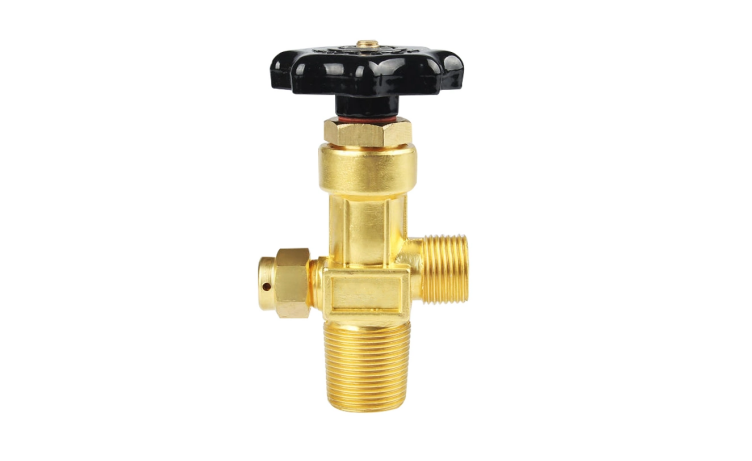Email format error
Email cannot be empty
Email already exists
6-20 characters(letters plus numbers only)
The password is inconsistent
Email format error
Email cannot be empty
Email does not exist
6-20 characters(letters plus numbers only)
The password is inconsistent

News

High Pressure Oxygen Valves: Safety and Precision
In the world of industrial gases, high pressure oxygen valves stand as the silent sentinels of safety and control. These critical components are the gatekeepers that ensure the precise and secure handling of oxygen, a gas as vital as it is reactive. Whether in medical applications, diving, or industrial processes, these valves are indispensable. But how much do we truly appreciate the role they play until something goes wrong? Let's dive deep into the realm of high pressure oxygen valves and explore why they are more than just metal and sealings.
The Crucial Role of High Pressure Oxygen Valves
Before we delve into the specifics, consider this: oxygen is not just a life-sustaining element but also an industrial workhorse. It fuels welding processes, supports life in medical settings, and is a key player in various chemical reactions. But handling it, especially at high pressures, requires precision and safety measures. This is where high pressure oxygen valves come into play.
Understanding High Pressure Oxygen Valves
High pressure oxygen valves are specifically designed to handle oxygen at pressures exceeding the standard atmospheric pressure. These valves are engineered to withstand the unique challenges posed by high-pressure oxygen, including the risk of fire and the need for absolute reliability.
Why High Pressure Oxygen Valves are Essential
- Safety: Oxygen, when compressed, can lead to hazardous situations if not handled properly. High pressure oxygen valves provide a safe means of controlling the flow and release.
- Precision: In medical and industrial applications, the exact amount of oxygen is often required. These valves offer precision control.
- Durability: They are built to endure the rigors of continuous use and high-pressure environments.
Types of High Pressure Oxygen Valves
The diversity in design and function is as vast as the applications they serve. Here are some types of high pressure oxygen valves:
- Regulator Valves: These control and maintain a steady flow of oxygen at a reduced pressure.
- Burst Disc Valves: A safety feature designed to release pressure if it exceeds a certain threshold.
- Check Valves: These prevent backflow, ensuring oxygen flows in one direction only.
- Shutoff Valves: Used to stop the flow of oxygen completely.
Benefits of High Pressure Oxygen Valves
Investing in high pressure oxygen valves is more than just a purchase—it's an investment in safety, efficiency, and reliability:
- Control: They offer precise control over the flow of oxygen, which is crucial in various applications.
- Safety: By managing pressure effectively, they reduce the risk of accidents.
- Longevity: High-quality valves are designed to last, reducing the need for frequent replacements.
- Versatility: They can be used across a range of applications, from medical to industrial settings.
Applications of High Pressure Oxygen Valves
High pressure oxygen valves are not just one-trick ponies; they serve in a variety of settings:
- Medical: In hospitals and clinics, they deliver oxygen to patients.
- Diving: For filling scuba tanks and controlling oxygen mixtures in diving operations.
- Industrial: In steelmaking, welding, and other processes that require controlled oxygen supply.
Choosing the Right High Pressure Oxygen Valve
Selecting the appropriate valve is paramount. Consider the following when making your choice:
- Pressure Rating: Ensure the valve can handle the pressure levels of your system.
- Material: Choose materials that can withstand oxygen without risk of corrosion or reaction.
- Certification: Look for valves that meet industry standards and certifications for safety and quality.
- Size: The valve should fit the pipeline or oxygen cylinder it's intended for.
Maintenance of High Pressure Oxygen Valves
Proper maintenance is key to prolonging the life and ensuring the functionality of your high pressure oxygen valves:
- Regular Inspections: Check for signs of wear, corrosion, or damage.
- Cleaning: Keep the valves clean to ensure smooth operation and prevent contamination.
- Lubrication: Apply lubricant as needed to reduce friction and prolong life.
- Replacement: Replace parts that show significant wear to maintain performance.
The Future of High Pressure Oxygen Valves
As technology progresses, so too do high pressure oxygen valves. The future looks bright with:
- Smart Valves: Incorporating sensors and connectivity for real-time monitoring.
- Material Innovations: New materials that offer better resistance to high pressures and reactive environments.
- Eco-Friendly Solutions: Valves designed with sustainability in mind, reducing environmental impact.
- Integration: Easier integration with existing systems for streamlined operations.
Conclusion
In a world that increasingly relies on precision and safety, high pressure oxygen valves and high pressure check valves are not just components; they are the guardians of critical processes. They may not garner the attention they deserve, but their importance cannot be overstated. The next time you turn on an oxygen cylinder or administer oxygen in a medical setting, remember the crucial role that high pressure oxygen valves and high pressure check valves play in ensuring safety and efficiency. As we look to the future, let's continue to innovate and improve upon these life-saving devices.

